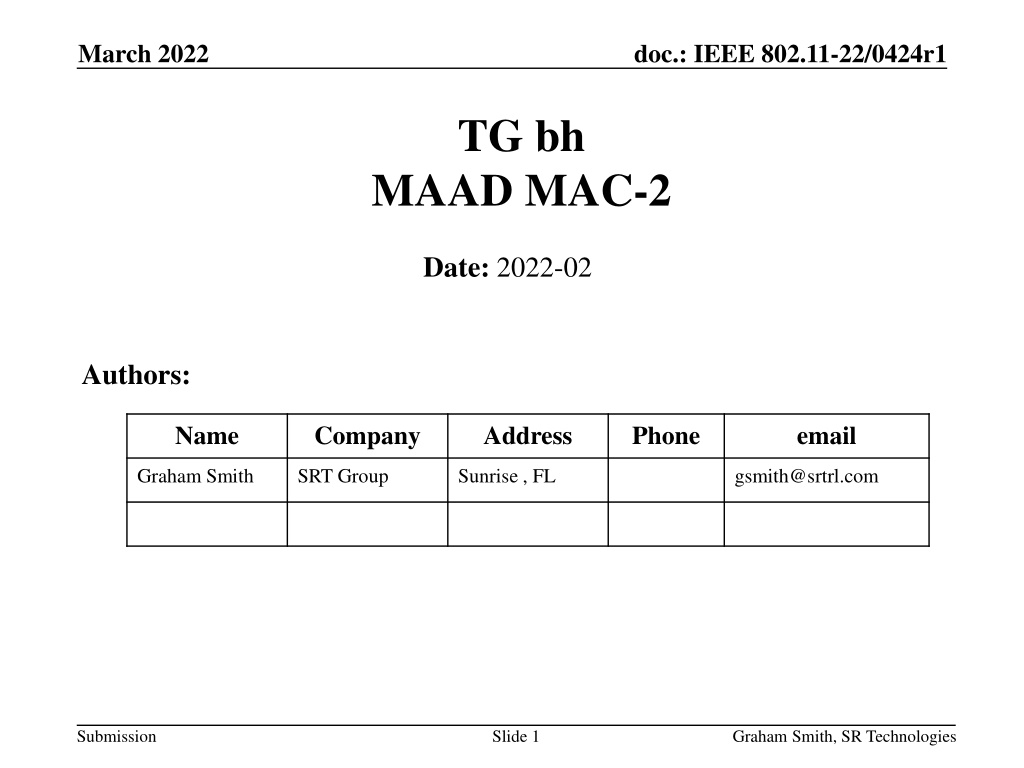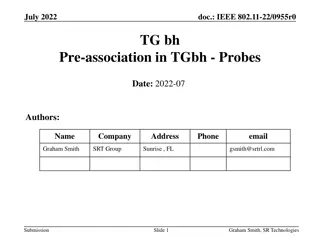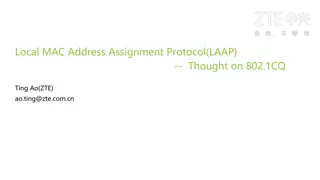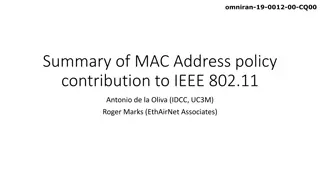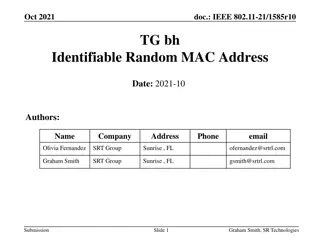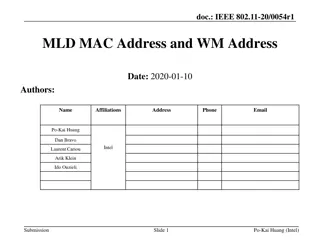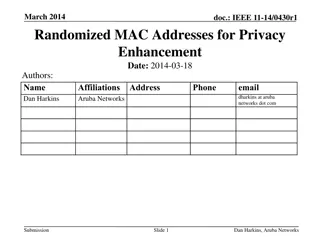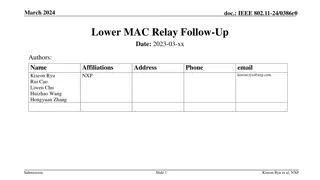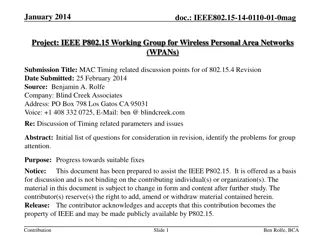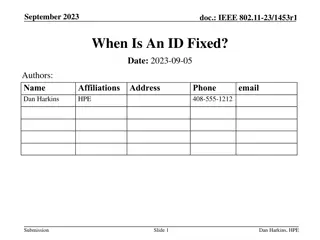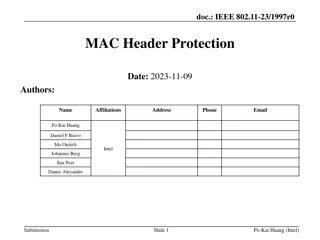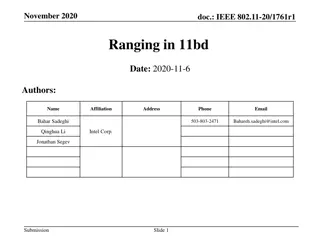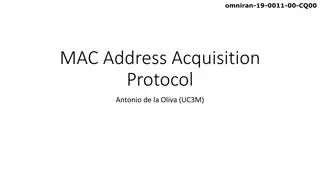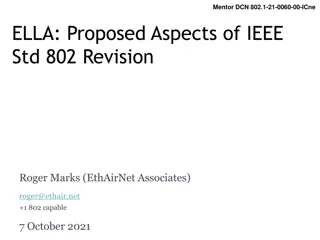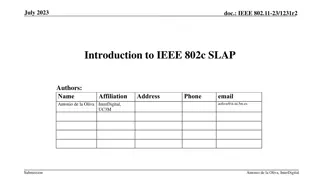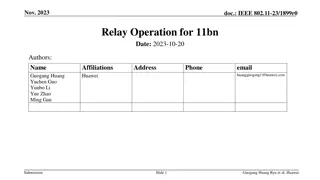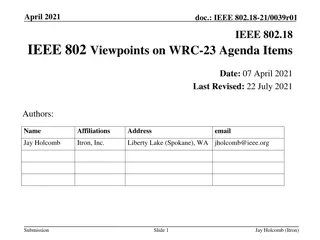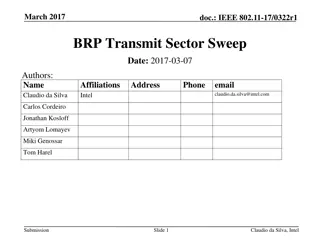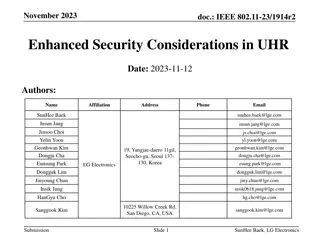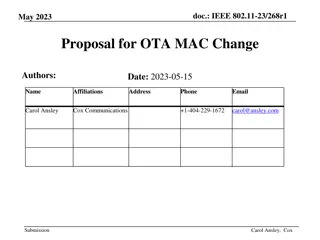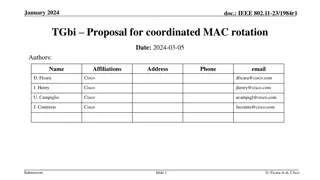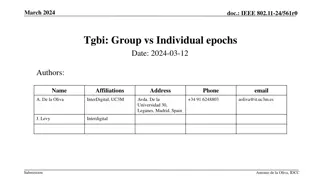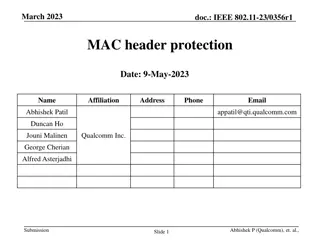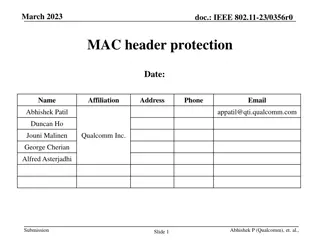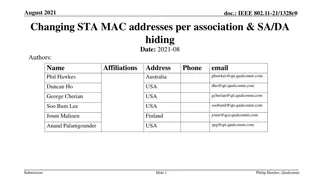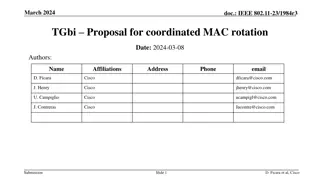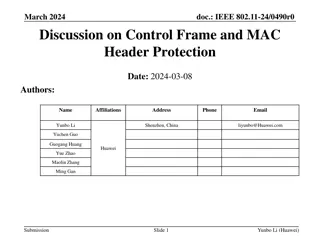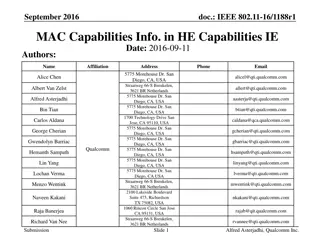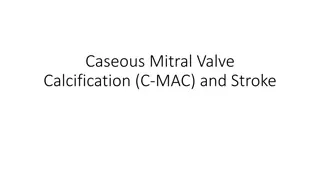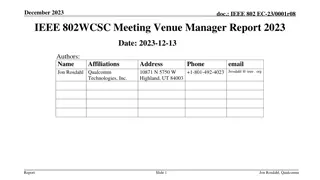IEEE 802.11-22/0424r1 - MAAD MAC Protocol Overview
The document discusses the MAAD MAC protocol, where the AP assigns a MAAD MAC address to the STA during association. Key differences from other schemes are highlighted, emphasizing the use of MAAD MAC addresses as identification. Details on support indication, address allocation, and recognition mechanisms are provided, offering insights into the protocol's operation and benefits for network management.
Download Presentation

Please find below an Image/Link to download the presentation.
The content on the website is provided AS IS for your information and personal use only. It may not be sold, licensed, or shared on other websites without obtaining consent from the author. Download presentation by click this link. If you encounter any issues during the download, it is possible that the publisher has removed the file from their server.
E N D
Presentation Transcript
March 2022 doc.: IEEE 802.11-22/0424r1 TG bh MAAD MAC-2 Date: 2022-02 Authors: Name Company Address Phone email Graham Smith SRT Group Sunrise , FL gsmith@srtrl.com Submission Slide 1 Graham Smith, SR Technologies
March 2022 doc.: IEEE 802.11-22/0424r1 MAAD MAC-1 Only AP advertises support (3rd party cannot tell if scheme in use) AP allocates a MAAD MAC address to the STA after association, using robust action frame exchange, initiated by STA MAAD MAC 2 Both STA and AP advertise support AP assigns MAAD MAC address during RSN association Common STA uses that allocated address the next time it associates AP recognizes STA pre-association Reassociation uses MAC address used for the association Submission Slide 2 Graham Smith, SR Technologies
March 2022 doc.: IEEE 802.11-22/0424r1 MAAD 2 Intro Important differences to Opaque device ID 22/0154 and Network Generated device ID 22/0187 In these schemes, the AP sends an ID to the STA and the STA sends this ID to the AP during RSN association. The STA ID can be permanent for that AP (it is not defined) STA ID is not related to the TA In MAAD-2, the AP allocates a MAAD MAC address to the STA, every association; and STA uses that as the TA in the next association. The STA does not send an ID, the TA is the identification (as was pre-RCM) Submission Slide 3 Graham Smith, SR Technologies
March 2022 doc.: IEEE 802.11-22/0424r1 Outline 1. 2. AP and STA show support for MAAD in Extended Capabilities STA associates first time using 4 W HS AMAAD MAC Address sent by AP in EAPOL-Key msg 3/4 (as per opaque device ID) 48 bit MAC address, Locally administered (maybe SLAP?) AP stores the allocated MAAD MAC for that STA STA stores the allocated MAAD MAC for that AP When STA comes back it uses that MAAD MAC Address as TA AP instantly recognizes the STA from TA Association Request etc. AP can identify the STA pre-association e.g. directed probe STA Associates using the allocated MAAD MAC as TA At association, AP provides new MAAD MAC address in EAPOL-Key msg 3/4 3. 4. 5. 6. 7. NOTES (as per network generated device ID): For FILS new MAAD MAC address is received in Association Response frame For FT new MAAD MAC address is received in EAPOL-Key msg 3/4, but not during the FT protocol reassociations within the same ESS Submission Slide 4 Graham Smith, SR Technologies
March 2022 doc.: IEEE 802.11-22/0424r1 Options for consideration 1. Does STA need to advertise support? AP could allocate MAC address anyhow. If STA knows what to do then it uses it, if not, the STA won t use it. Is it important that 3rd party does not know that scheme is being used? Conclusion is that STA does indicate support. AP could embed something in MAAD MAC address for recognition purposes. Could be simple like a unique OUI Could be an embedded code AP could instantly know STA is known Nice, but out-of-scope 3. Does STA need to acknowledge? Could add an acknowledgement in message 4. 2. Submission Slide 5 Graham Smith, SR Technologies
March 2022 doc.: IEEE 802.11-22/0424r1 Discussion Changes from Opaque device ID and Network generated device ID STA receives a new ID , every association STA ID is a new MAC Address STA does not provide an ID in the association, it uses the allocated ID as its TA. Advantages: TA is identified pre-association TA changes every time, but is identified only by the AP Comparison with original MAAD scheme (uses robust action frame exchange) 3rd party knows scheme in use STA controls initiates the provision MAAD 1 No Yes MAAD 2 Yes No Submission Slide 6 Graham Smith, SR Technologies
March 2022 doc.: IEEE 802.11-22/0424r1 Straw Poll (3/8/2022) How much priority do you put on continuing work on the MAAD MAC 2 proposal (11-22/0424)? High 5 Medium 16 Low 7 Submission Slide 7 Graham Smith, SR Technologies
